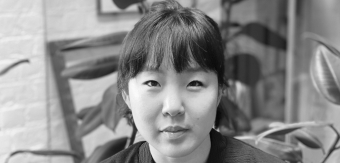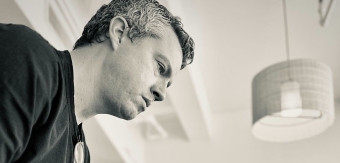In an industry brimming with creativity and innovation, Benji Wiedemann stands out as a beacon of inspiration and strategic vision. As the Co-Founder and Executive Creative Director at Wiedemann Lampe, Benji's journey is a testament to resilience, passion, and an unyielding drive to push the boundaries of creative expression. From his early days in Germany to his transformative experiences in London's dynamic design scene, Benji has cultivated a unique perspective that fuels his leadership and creative endeavours.
In this insightful interview, Benji shares a glimpse into his multifaceted role, where no two days are alike, and the global nature of his work demands a seamless blend of strategic foresight and creative agility. He reflects on the challenges that have shaped his career, the mentors and peers who have inspired him, and the values that guide his approach to the creative industry. Benji also offers invaluable advice to aspiring creatives, emphasizing the importance of passion, continuous learning, and authenticity in an ever-evolving landscape.
Join us as we delve into the mind of Benji Wiedemann, exploring his journey, his vision for the future of the industry, and the principles that underpin his success at Wiedemann Lampe.
Tell us a bit about your role! Is there a “typical” day?
I bet everyone says this, but there really are no typical days. Our clients are completely global, so that usually gives us some structure: we start with the Middle East, then chat to teams in the UK and Europe, then cross the pond to New York and finish the day with calls to the West Coast.
It’s not unusual for me to be travelling to see these clients in person, I can be in multiple countries each month working on different projects. I just got back from Abu Dhabi, for example.

Throughout the day I hop between projects and people, because that’s the way my brain works best, but the majority of my role nowadays revolves around the longer strategic view for the business. I focus primarily on the business direction, bringing in the best project briefs I can, and ensuring the studio is not only healthy – but in a place to stretch and excite our team.
What was the biggest challenge in getting to your current position?
Consistently finding the strength to climb back on the horse and show up, even when you don’t feel like you can. It’s so difficult sometimes to avoid comparing yourself to your peers and their wins, especially in an industry full of such exciting opportunities and inspiring people, so sometimes I need to remind myself that everyone’s perception of success is relative.
The hardest part is digging deep, getting back in there, and continuing to push forward. If you can make small, incremental steps each day, you’ll eventually look back and realise how far you’ve travelled.
What’s your personal background and what role did it play in your career?
I moved to the UK from Germany in 1998 for a month-long work placement at an ad agency in Soho Square. I found myself falling in love with London and managed to hang around for six months before going back home.
I returned to the UK not long after, studying graphic design in Bournemouth, before returning to London for a job at Lewis Moberly in 2002. I worked as a designer there for four years and learnt so much about the craft and what it means to design for a client. It’s also where I met Alex Lampe, and where we decided to set up business together, so it’s fair to say it transformed my trajectory.
Which individuals and/or agencies do you gain inspiration from? Do you have any heroes in the industry?
I’m incredibly grateful for the early teachings of people like Mary Lewis and Robert Moberly, Tim Molloy from the Science Museum who gave us our first big break in 2010, and my dad - who opened my eyes to the opportunities within the creative industry, and fostered my passion for this world. And above all, Alex, my business partner who has, is, and hopefully will continue to be the sound of reason and a source of great inspiration and strength.
But truly, the industry is full to the brim of brilliant, inspiring people. While it can be terrifying and intimidating sometimes, my peers give me so much motivation to keep pushing, keep being inspired, and keep striving for better.
What advice would you give to your younger self?
Be kinder to yourself, trust yourself more, and remember that we’re all works in progress.
If you weren’t in your current industry, what would you be doing?
I actually can’t conceive myself being in any other industry. My dad owned an ad agency, so growing up I was engrossed in that world – it was all I ever knew, really. I’m in the privileged position to admit that I can’t think of a different path for myself.
What’s your one big dream for the future of the industry?
I want us to keep making the steps towards accountability and integrity throughout our work. Try and guide your clients to aim for the biggest cultural impact they can make, and then work with them to align their brand and business strategy behind this goal.

Speak with sincerity, and make the concerted effort to translate that in a truthful way. It’s being called out more than ever, but I do think we need to continue making that conscious choice to avoid deceptive tactics or phoniness in the projects we choose and the work we put out into the world.
What are your top tips for aspiring creative professionals?
Ensure what you’re doing is truly what you love. Work hard, dream big, and always be inquisitive. It’s really not just a job: it’s a calling. We’re all in a perpetual state of trial, error, and improvement. Learn, try, fail, and learn from those failings because you love what you do.
What industry trends do you foresee taking hold in the coming months?
I think hyper fixating on the newest trend in our industry can actually be a distraction from our work in the long term. While we’ll see larger shifts in the industry, like AI in the coming years, I fear reducing our work down to shallower microtrends can undersell the depth of the creative process.
We need to be aware of the impact our work can have on society, and make sure we are responsible for improving the world around us in sustainable, forward-thinking ways.
What do you think sets apart truly exceptional creatives from the rest of the pack?
When looking through the portfolios we receive at Wiedemann Lampe, those with the ability to sum up complex situations in simple, understandable ways always stand out to us. It's about understanding the problem of a brief and addressing it creatively, with craftsmanship and imagination. If you are able to consistently deliver compelling and distinct solutions across a portfolio, you’re in a very solid position.
How do you think technology has influenced the creative industries, and how have you adapted to these changes?
Technology is influencing the industry in countless ways. The trick is finding the moments when it can become an active role in your business.
For example, when the pandemic hit, we created our own digital engagement platform named ‘Lemonade’, which allows us to run workshopping modules with clients that are uniquely tailored to each project’s requirements.
It has revolutionised the way we approach briefs, as we can run these sessions on anything from brand purpose, to content strategy, to functionality mapping, allowing us to have these deeper conversations from the beginning of a project. Not to mention the reduction of travel costs and carbon footprint…
How do you prioritise self-care and maintain a healthy work-life balance?
I’ll admit I’m not very good at prioritising self-care. Work is my life, just like my family. When I’m with one I’m thinking about the other, I can never really switch either of them off.
But I do try to claw out time for myself. Twice a week I wake up at 5.45am for a 12.5km run before the morning with the kids starts. It’s not easy, but I realise it’s important to try and make that time for just me.
How do you handle creative blocks or burnout?
I can find it hard to take the time to deal with my burnout, learning through the years to just keep going – especially when there are deadlines and promises we need to keep for the sake of our clients.

If I’m struggling, I’ll dig deeper into the subject matter at hand, looking beyond the brief into the larger context of the project to try to make it as real as possible in my brain. Giving it life in that way usually helps unlock something within me that either creates a new creative avenue, or gives me the boost of energy I need to dig back in.
Looking for inspiration in everything, and truly immersing yourself within it, is one of the best ways I’ve been able to keep that creative pace when it’s needed.
Can you describe a moment when you had to think outside the box to overcome a creative challenge?
Thinking outside the box is a constant necessity, and I think most creatives live outside of boxes as much as they can.
When you’re running an agency there are two states of being: creation or destruction. When thinking about the long-term health of a business, we can’t stop thinking outside of that box, otherwise we’re failing to stay in the state of creation. That’s how systems like Lemonade came about, as creative reactions to the business pressures of the pandemic.
Do you have any websites, books, or resources you would recommend?
My recommendation for all creatives is to avoid trapping yourself within the design bubble. There are, obviously, incredible resources within the industry but it can be easy to focus on the brilliant work of others and fall into the replication trap.
Learn from everything, pull from diverse influences in the most random and mundane of places, that’s how you can keep your perspective fresh and authentic to you.





